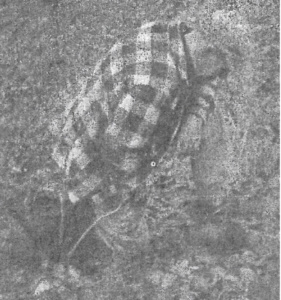********* by Dennis M. McFarlin
Initial Stage
The search for black gold–that’s oil as they say–in Adams County occurred at the beginning of the depression. The first reference to the proposed search for oil in central Adams County appeared in the early fall of 1928 (Friendship Reporter, Sep 27, 1928). In October 1928 promoters from outside the county retained Mrs. Elsie Barnes of the Adams County Real Estate & Abstract Co. in Friendship to obtain mineral leases from landowners within a range of about five miles from Friendship. The leases ran for a period of twenty years and included a royalty clause to the landowner in the event that oil was discovered. The promoters indicated that as soon as 15,000 acres of land had been secured, the drilling of a test well would commence. It was reported that it was anticipated that oil would be reached at a depth of about 2,000 feet. Perhaps central Adams County was selected for this endeavor since a recent find of oil had occurred at Muskegon, Michigan.
By mid October 1928 it was announced that the first test well would be drilled within a two and a half mile radius of Friendship (Friendship Reporter, Oct 18, 1928; also The Hancock News, Oct 26, 1928.) An oil drilling rig was being shipped by rail “from an eastern point” and was anticipated arriving in November. However, no further news appears regarding the project until the following year, 1929.
Second Stage
By late November 1929 an oil drill machine had arrived and was transported to the proposed drill site in Section 30 of the Town of Preston on land owned by Mrs. Elsie Barnes (Friendship Reporter, Nov 21, 1929; the actual site of the test well was on the west side of 13th Dr. Just west of Roche-a-Cri Mound and located in the NE1/4 of the SW1/4 of Sec. 30, T. 18N, R.6E. The well site is about 100 feet to the west of the current roadway. See also, Plat Book of Adams County, Wisconsin, July 1931.) The drilling operation was under the direction of I. E. Huff of Randolph, Wisconsin. A water well was drilled and a drill house constructed on the site. It was anticipated that up to 100 feet would be drilled per day. The local news media advised its readers that the community should “not be carried away by any visions of untold riches pouring from beneath Adams County soil.” (Friendship Reporter, Nov 21, 1929).
Project Limps along
In January 1930 the drilling operation was reported to have reached 270 feet depth (The Hancock News, Jan 17, 1930.) The same company drilling in Friendship was also drilling an experimental well near Rhinelander, Wisconsin. Drilling encountered increasing obstacles. First, the operation was being “run on a shoestring.” At about 200 feet depth, the drilling operation ran into solid granite and eventually the drill bit broke off and further attempts to drill kept running into the broken bit. Finally, in November 1930, the project was abandoned.
Recollections of an Oil Rigger
One of the workers on the oil drilling project was Stewart “Packy” McFarlin. In November 1954 Larry Notman, a local reporter for the Friendship Reporter, accompanied Packy to the original drilling site on the west side of Roche-a-Cri Mound. ^
 Packy McFarlin looking down into the shaft, now filled with water, of the oil well drilled west of Roche-a-Cri mound in 1929. Photo taken by Larry Notman, Friendship Reporter, in 1954.
Packy McFarlin looking down into the shaft, now filled with water, of the oil well drilled west of Roche-a-Cri mound in 1929. Photo taken by Larry Notman, Friendship Reporter, in 1954.
As reported by Notman, “Last week Packy McFarlin went back to the spot with the reporter, the first time he had gone back since he worked on the project in 1930. Despite the overgrowth of trees and bushes since then, he found the road into the spot and soon discovered the spot where the well was drilled. When he had left the project a wooden plug had been put on the well. Now the plug was missing and a rusty five gallon oil can sat atop the pipe sticking a few inches above the ground. A rusty fender from an automobile abandoned near the site in 1930 was the clue enabling him to find the site.” (Friendship Reporter, Dec 2, 1954.) =======================================
The Quatrefoil Newsletter of the Adams County Historical Society
Winter Issue, January 2019

